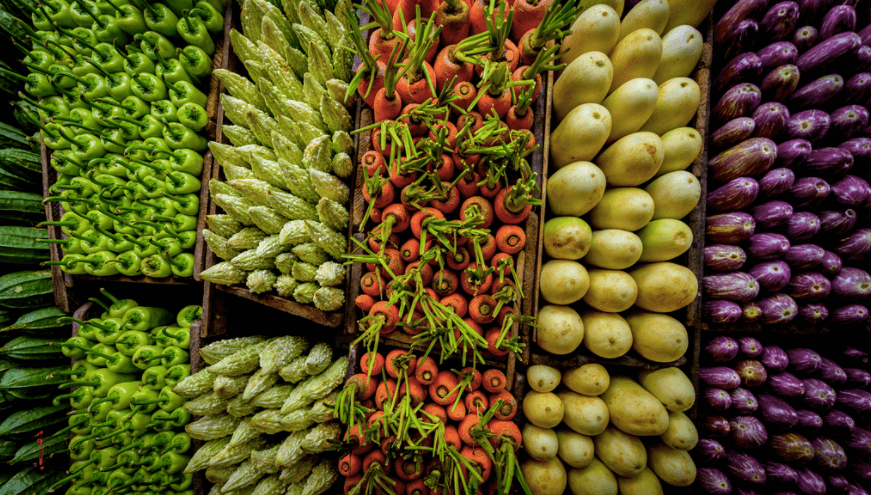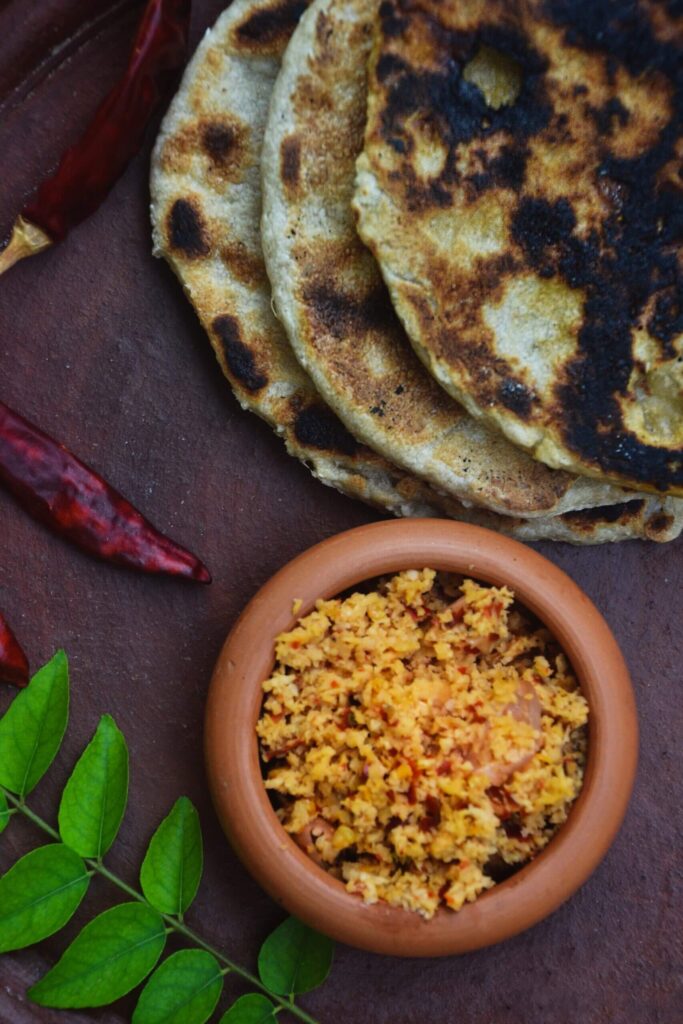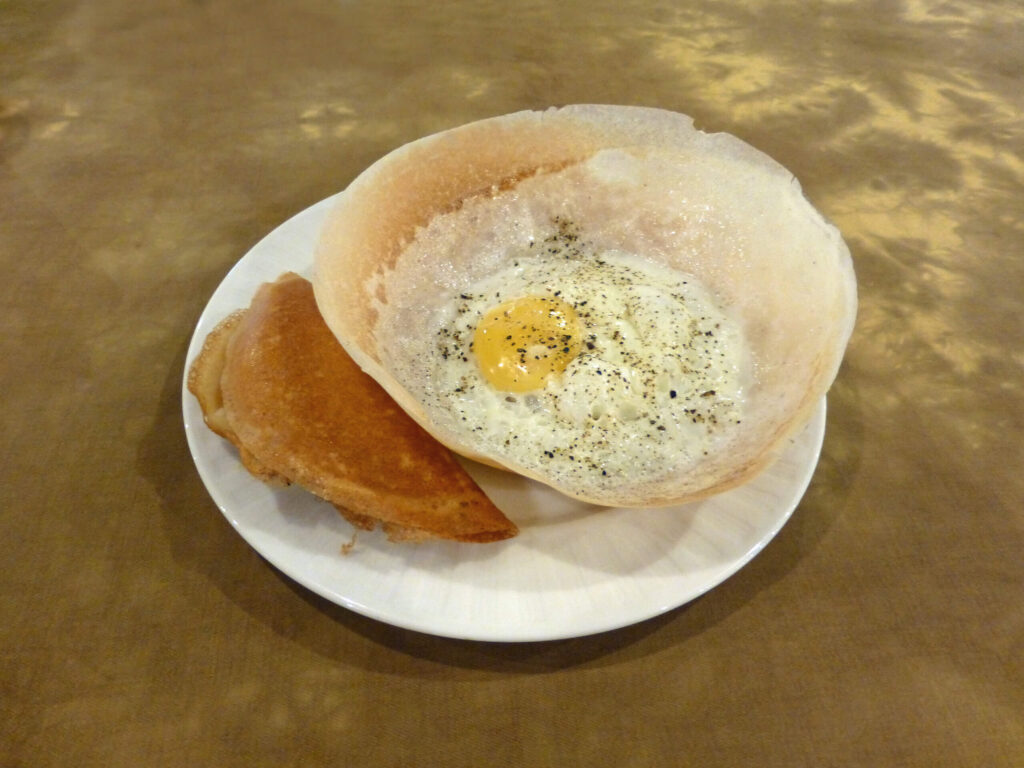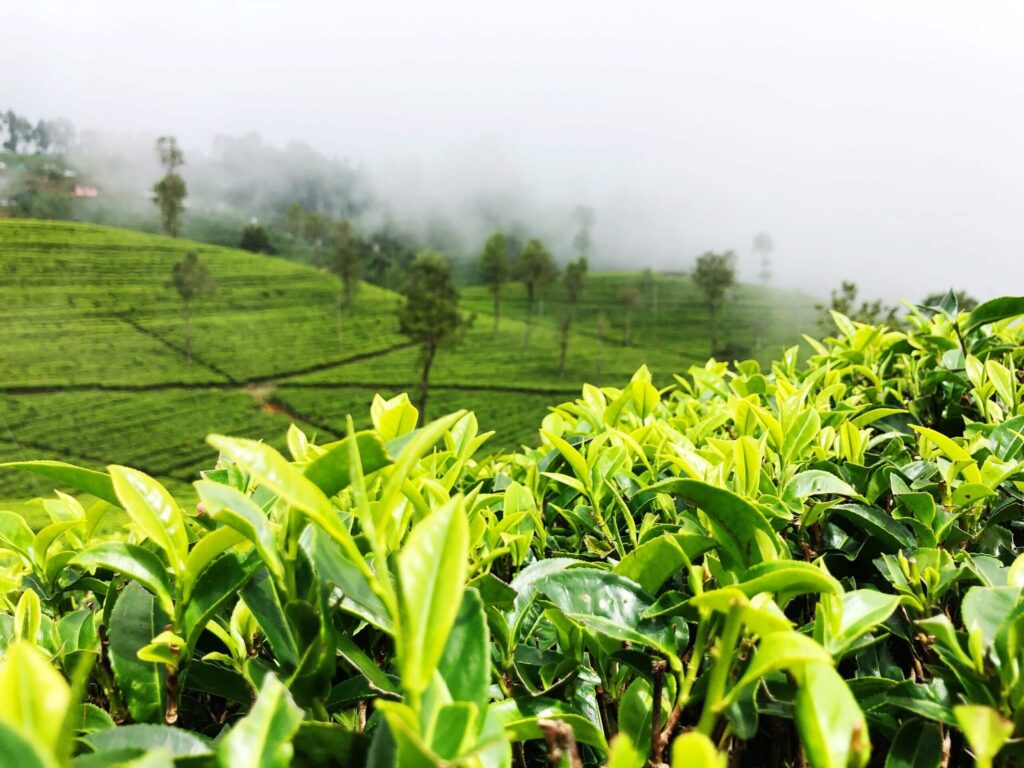
Flavorful, bright, fresh, and spicy, there’s nothing quite like traditional Sri Lankan food.
If you’re planning a trip to this island nation (on a Yoga Adventure, perhaps?) you’re in for a culinary treat.
Get ready to venture off the beaten tourist track – that’s where the good meals are – and have a bottle of water handy. Things are about to get hot.
What is Sri Lankan Food Like?
Sri Lankan food is full of local produce, fresh seafood, and strong flavors, making for a cuisine that’s totally unique to the island nation.
But it’s the spices that make Sri Lankan food truly memorable.
Cinnamon, cardamom, curry, lemon grass, turmeric, chili pepper… There are too many to list! Sri Lankan cooks blend these spices masterfully into flavor profiles that hit differently than anything else in the world.
Curry dishes take center stage at most meals, complimented by plenty of tasty sides, like tangy pickles and sweet relishes. A bed of white rice is always there to balance out all that extravagant flavor.
If you want to be sure to hit all of these Sri Lankan foods, join us on our next adventure to Sri Lanka.

Essential ingredients in Sri Lankan cuisine
- Rice: Rice is the staple grain of Sri Lanka, and acts as a base in most meals.
- Coconut: Another staple ingredient is the king coconut: trees are abundant, and you’ll often see street vendors toting sunny orange clusters of nuts.
- Curry: The curry leaf is a favorite spice in Sri Lankan cuisine, but the word “curry” encompasses a whole lot more than one flavor!
- Chili pepper: Brought to Sri Lanka through international trade, they’re what give Sri Lankan food its kick.
- Maldive fish: Dried, smoked, shredded bonito is used in small quantities to add pungent savoriness to curries and garnishes.
Sri Lankan vs. Indian Food
Sri Lanka is just off the coast of India, so naturally, there are similarities between South Indian and Sri Lankan cuisine. The general format of a meal – curries served over rice – is similar, and some popular Indian dishes, like samosas and dhal, have Sri Lankan counterparts.
But Sri Lankan curry sauce is thinner, multicultural influences are more prominent (thanks to a long history of international trade), and above all, everything tends to be spicier. It’s also worth noting that lots of the foods found in Indian restaurants in the US are based off North Indian cuisine. You certainly won’t find chana masala or butter chicken in Sri Lanka!
12 Essential Dishes in Sri Lankan Cuisine
Sri Lankan Curries
While “rice and curry” Is the national dish of Sri Lanka, it’s far more than a single dish.
Sri Lankan curries feature big chunks of protein and delightfully spicy, thin broth that’s always tempered by a generous portion of rice.
But that’s where the similarities end – the variety of curries in Sri Lankan cuisine is almost infinite, and each one brings a unique explosion of spices to your palate.
Here are a few crowd favorites…
1 – Crab Curry
Because it’s an island nation, Sri Lankan cuisine features plenty of seafood! While you’ll likely get the chance to taste all kinds of fish curries during your visit, crab curry might make the biggest impression.
The fresh, sweet crab meat is a perfect complement to the spices of the curry. Because the meat is naturally tender, it absorbs just the right amount of flavor.
2 – Jackfruit Curry
Young jackfruit is savory, succulent, and great at soaking up spices – in other words, it shines at the center of a veggie-forward meal!
Here in the US, we’re just catching onto jackfruit’s delicious versatility. In Sri Lanka, where the plant is native, chefs have perfected these recipes over generations.
Whether the texture reminds you of meat or a root vegetable, we’re pretty sure you’ll keep coming back for more.
3 – Dhal
Similar to its Indian counterpart but spicier, this lentil curry acts as a supporting actor alongside other curries. You’ll also see it at the breakfast table!
Sri Lankan Food: Sides and Garnishes
4 – Rice
Rice is the staple grain in Sri Lankan cuisine. It’s the foundation of just about every meal, and absolutely necessary to balance out the powerful spices, tangy pickles, and sweet-and-spicy relishes that adorn your plate.
A dish of plain rice at your elbow will also be your saving grace when the spice threatens to overpower your foreign taste buds.
5 – Hoppers

Hoppers are a distinctly Sri Lankan breakfast carbohydrate. Made from a lightly fermented, coconutty batter, they’re fried in round pans, yielding a bowl-shaped pancake that’s thick on the bottom and crispy around the edges.
6 – Pol Sambol
Mix shredded coconut, chiles, and a few other ingredients and you have pol sambol: Sri Lanka’s iconic coconut relish. Along with seeni sambol (sweet onion relish), it’s a popular side dish served with curry. But it’s just as delicious on its own with a bit of roti!
“Short Eats:” Sri Lankan Street Food and Snacks
A traditional rice-and-curry style meal of Sri Lankan food takes hours to prepare. While you’re waiting for the curry to cook (or need a quick bite on the go!) “short eats” come to the rescue.
From handheld snacks to filling meals, pick up one of these street food staples on the sidewalk or at the train station to calm any craving.
7 – Pol roti with hot sauce
Every South Asian culture has its own spin on roti, versatile flatbread cooked on a hot griddle. In Sri Lanka, roti are on the thicker side, non-greasy, and packed with coconut.
Breakfast, lunch, and dinner are all acceptable times to eat roti, but it shines most when you’re desperate for a portable snack. Roti with a smear of chili sauce is a beloved street food staple.
8 – Kottu
Kottu, or kottu roti, is the perfect street meal. Like fried rice’s spicier cousin, but with a base of chopped-up roti instead of rice, kottu includes curried meat, vegetables, and sometimes egg.
It’s all sauteed together on a flat griddle with special cleavers (we can almost hear them now…)
9 – Vadai
Dhal, but make it a fritter! Vadai are crispy on the outside, and moist and dense on the inside. Some varieties are studded with tasty bonuses, like shrimp.
Sri Lankan Desserts and Beverages
10 – Tea

Sri Lanka was once known as Ceylon, a word that’s almost synonymous with tea. And for good reason! No day in Sri Lanka would be complete without multiple cups.
Black tea is traditionally prepared very strong (enough to perk up a coffee lover!) and tempered with hot milk and sugar. Green and white teas are also produced locally.
On our Yoga Adventure, you’ll tour an artisanal tea estate and find out how each flavorful brew comes to be.
11 – Undu walalu
Undu walalu, or pani walalu, is a charming pinwheel pastry that’s deep-fried and filled with sweet syrup. Its distinct flavor comes from a bean called split black gram mixed with (you guessed it!) coconut.
Undu walalu is often served as a New Year’s treat, but our local partners are gracious enough to cook up a batch for our visiting adventurers at other times of the year.
12 – Watalappan
This delicious coconut custard is common on dessert menus across Sri Lanka.
What makes it special is the way it’s sweetened – not with cane sugar, but with kithul jaggery, a molasses-dark, unrefined sugar that comes from the kithul palm tree. A warm hint of cardamom brings this deceptively simple dessert together.
Finding the Best Food In Sri Lanka
Despite the abundance of local ingredients and rich tradition, it’s surprisingly hard to find traditional Sri Lankan food as a traveler.
Restaurants in travel destinations often serve muted versions of curries and Western-style meals intended for tourists. And with the exception of “short eats,” some of the best Sri Lankan food is found in people’s homes, not in restaurants.
On our Sri Lanka Yoga Adventure, you’ll skip the tourist spots. Instead, you’ll dine at carefully selected restaurants that dish out traditional Sri Lankan cuisine as it’s meant to be eaten (we hope you’re practicing your spice tolerance at home!)
You’ll also stop for meals and sweets at local homes, cook with a local restaurant owner, and learn Sri Lankan cooking tips you can (sort of) replicate at home… even if you can’t get your hands on the perfect spice blend.

